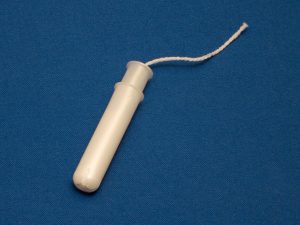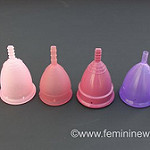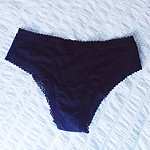by Thea Voutiritsas
I think it’s safe to say most women don’t enjoy their periods, but there are several products out there to at least make it more comfortable. Here’s a list of period products to help you surf the crimson wave however you like.
Sanitary Pads  – The traditional pad comes in a variety of sizes, depending on your flow and activity level. The thinnest are panty-liners are helpful on extremely light days, or to act as insurance for another mode of period protection. Mid-size or regular pads hold more menstrual blood, then the super and overnight pads are nice for those of us who are heavy bleeders. Most pads have a sticky bottom that attaches to your underwear. Pros: You have TONS of options. Plus, pads are noninvasive, easy to use, and safe for overnight wear. Cons: Not suitable for athletic activities. They can’t be worn while swimming, and can shift or even fall out if you’re running, jumping, or moving around a lot. They’re also not reusable, so do create waste.
– The traditional pad comes in a variety of sizes, depending on your flow and activity level. The thinnest are panty-liners are helpful on extremely light days, or to act as insurance for another mode of period protection. Mid-size or regular pads hold more menstrual blood, then the super and overnight pads are nice for those of us who are heavy bleeders. Most pads have a sticky bottom that attaches to your underwear. Pros: You have TONS of options. Plus, pads are noninvasive, easy to use, and safe for overnight wear. Cons: Not suitable for athletic activities. They can’t be worn while swimming, and can shift or even fall out if you’re running, jumping, or moving around a lot. They’re also not reusable, so do create waste.
Reusable Pads – These work similarly to disposable pads, but you can wash them. Pros: These are also noninvasive, easy to use, and safe for overnight wear. Eco-friendly. Cons: Not suitable for swimming or sports. Reusable pads don’t have adhesive, so they’re more likely to slip. They may not be easy to use if you’re on the go. If you carry a backup, you’ll have to keep the dirty one somewhere, or you can rinse it in the sink, but then it’ll be wet for a while.

Tampons – Tampons are one of the most popular period products in the U.S. They are made of absorbent material and compressed into a tiny tubular shape. They come in different sizes and absorbencies for heaver and lighter periods as well. Light, regular, heavy, super, and super plus are just some of the options. Some have a cardboard or plastic applicator to help with insertion into the vagina, but ones without the applicator are also available. Pros: Convenient for sports. Small and easy to bring along. Easy to dispose. Cons: Tampons create waste, and so do their applicators. Some may find insertion invasive. They cannot be worn for more than eight hours. Likely to leak if you have a heavy flow. Not safe during sex. Also, manufacturers are not legally required to disclose what materials the tampon is made of, though most tampons are a cotton-blend. Has been linked to toxic shock syndrome (TSS)

Softcups/Flex – Softcups are discs made of a flexible plastic ring, and a soft polymer “bag-like” attachment. The ring is inserted into the vaginal canal, then tucked behind the pubic bone. Then it forms to the shape of your body making a vacuum-like seal that catches the menstrual blood. It can be worn for 12 hours and can be worn during sex, but it is NOT a contraceptive. Pros: Hypoallergenic. Can be worn during sports, swimming, or sex. Small to carry and easy to dispose. Safe for overnight/long wearing. Cons: Removal can be messy before you get used to it. They create waste. Less size options.

Menstrual Cups – Most menstrual cups are made of silicone or rubber. The cup is folded and inserted much like the flexcup or a tampon. It should spring open and rest against the walls of the vagina, creating an airtight seal. Cups are reusable and can be washed with soap and water, and sterilized by boiling them. Can be left in for up to 12-hours. Most people carry a backup if they need to change it out midday, or you can wash it in the sink. Pros: Available in silicone or latex. Reusable/eco-friendly. Safe for overnight/long wearing. Cons: Limited size range. Removal can be messy as you learn.

Absorbent Panties (Thinx) – Thinx panties are period protection built in to your underwear. They work similar to panty liners, but without the risk of slippage. They come in a variety of styles and sizes. They are made of antimicrobial cotton that helps fight bacteria. Pros: Eco-friendly, reusable, machine washable. Built in protection that you don’t have to think about. Cons: Even the most absorbent size can only hold up to 10mL of menstrual blood (2 tampons worth), so it’s better as a backup on heavy days, but probably won’t get you through your period on its own.
This list is certainly not a list of everything that’s out there. Do your own research and take charge of your body’s natural cycle. Whatever option you choose, the important thing is that you’re comfortable, clean, and in-the-know about what you’re using. Experiment, be safe, and happy mensies!